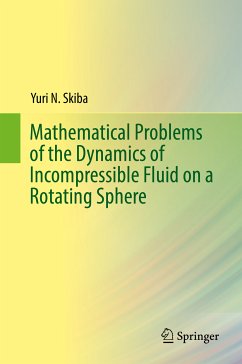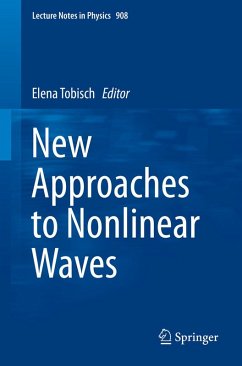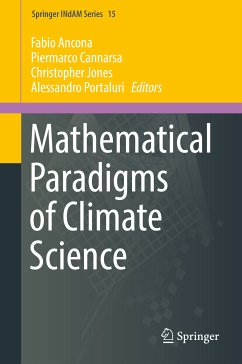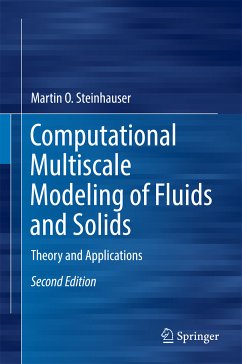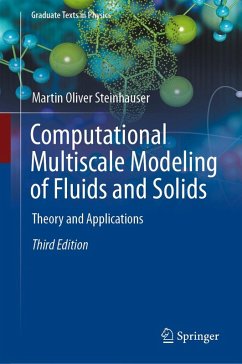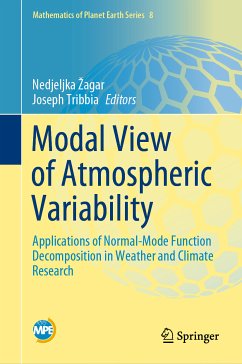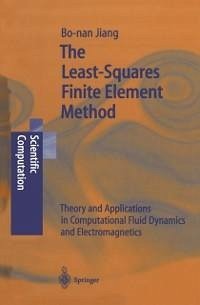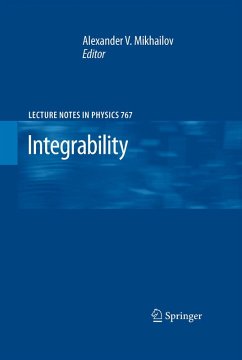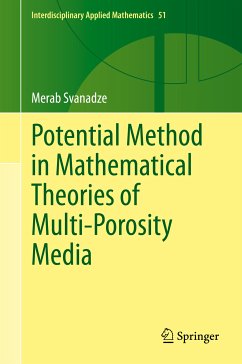
Fundamentals of Geophysical Hydrodynamics (eBook, PDF)
Versandkostenfrei!
Sofort per Download lieferbar
72,95 €
inkl. MwSt.
Weitere Ausgaben:

PAYBACK Punkte
36 °P sammeln!
This newly-translated book takes the reader from the basic principles and conservation laws of hydrodynamics to the description of general atmospheric circulation. Among the topics covered are the Kelvin, Ertel and Rossby-Obukhov invariants, quasi-geostrophic equation, thermal wind, singular Helmholtz vortices, derivation of the Navier-Stokes equation, Kolmogorov's flow, hydrodynamic stability, and geophysical boundary layers. Generalizing V. Arnold's approach to hydrodynamics, the author ingeniously brings in an analogy of Coriolis forces acting on fluid with motion of the Euler heavy top and...
This newly-translated book takes the reader from the basic principles and conservation laws of hydrodynamics to the description of general atmospheric circulation. Among the topics covered are the Kelvin, Ertel and Rossby-Obukhov invariants, quasi-geostrophic equation, thermal wind, singular Helmholtz vortices, derivation of the Navier-Stokes equation, Kolmogorov's flow, hydrodynamic stability, and geophysical boundary layers. Generalizing V. Arnold's approach to hydrodynamics, the author ingeniously brings in an analogy of Coriolis forces acting on fluid with motion of the Euler heavy top and shows how this is used in the analysis of general atmospheric circulation.
This book is based on popular graduate and undergraduate courses given by F.V.Dolzhansky at the Moscow Institute of Physics and Technology, and is the result of the author's highly acclaimed work in Moscow's Laboratory of Geophysical Hydrodynamics. Each chapter is full of examples and figures, exercises and hints, motivating and illustrating both theoretical and experimental results. The exposition is comprehensive yet user-friendly in engaging and exploring the broad range of topics for students and researchers in mathematics, physics, meteorology and engineering.
This book is based on popular graduate and undergraduate courses given by F.V.Dolzhansky at the Moscow Institute of Physics and Technology, and is the result of the author's highly acclaimed work in Moscow's Laboratory of Geophysical Hydrodynamics. Each chapter is full of examples and figures, exercises and hints, motivating and illustrating both theoretical and experimental results. The exposition is comprehensive yet user-friendly in engaging and exploring the broad range of topics for students and researchers in mathematics, physics, meteorology and engineering.
Dieser Download kann aus rechtlichen Gründen nur mit Rechnungsadresse in A, B, BG, CY, CZ, D, DK, EW, E, FIN, F, GR, HR, H, IRL, I, LT, L, LR, M, NL, PL, P, R, S, SLO, SK ausgeliefert werden.




